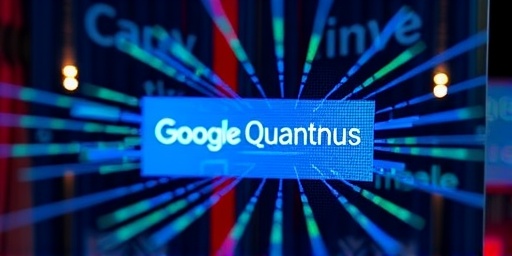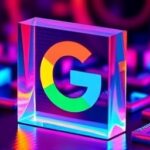In a monumental advancement for Quantum computing, Google has announced the creation of the world’s first stable, error-corrected logical qubits. This breakthrough, revealed by the Google Quantum AI team, marks a pivotal step toward building reliable quantum computers capable of tackling problems beyond the reach of classical systems. The achievement addresses one of the field’s biggest hurdles: the fragility of qubits, which are prone to errors from environmental noise.
The team’s work, detailed in a peer-reviewed paper published today in the journal Nature, demonstrates qubits that maintain coherence for extended periods while correcting errors in real-time. This could accelerate applications in cryptography, materials science, and beyond, potentially reshaping industries in the coming decade.
Google Quantum AI’s Innovative Surface Code Implementation
The Google Quantum AI lab in Santa Barbara, California, has been at the forefront of Quantum computing research for years, but this latest milestone stands out. Led by principal investigator Hartmut Neven, the team utilized a sophisticated error-correction technique known as the surface code. This method involves arranging physical qubits into a two-dimensional lattice, where surrounding qubits detect and fix errors without disrupting the overall computation.
According to the paper, the researchers achieved a logical qubit that operates with an error rate below 0.1%, a dramatic improvement over previous attempts where error rates hovered around 1-2%. ‘We’ve crossed a critical threshold,’ Neven stated in a press briefing. ‘Error-corrected qubits are no longer a theoretical dream; they’re a practical reality that will enable quantum machines to scale reliably.’
To put this in perspective, traditional qubits in Google’s Sycamore processor, which famously demonstrated quantum supremacy in 2019, could only maintain coherence for microseconds before decohering. The new error-corrected versions extend this to milliseconds or longer, allowing for more complex algorithms. The experiment involved 49 physical qubits forming a single logical qubit, a configuration that required precise control over superconducting circuits cooled to near absolute zero.
Overcoming Qubit Fragility: The Science Behind Error Correction
At the heart of Quantum computing lies the qubit, the quantum analog to the classical bit. Unlike bits, which are strictly 0 or 1, qubits can exist in superpositions of both states simultaneously, enabling exponential computational power. However, this power comes at a cost: qubits are incredibly sensitive to disturbances like thermal vibrations or electromagnetic interference, leading to high error rates that render computations useless for large-scale problems.
Error correction in quantum systems is far more challenging than in classical computing. Classical error correction uses redundancy, like parity bits, but quantum mechanics’ no-cloning theorem prohibits directly copying qubits. Instead, techniques like the surface code encode logical qubits across multiple physical ones, using syndrome measurements to identify errors without collapsing the quantum state.
Google’s implementation builds on years of foundational work. In 2021, the team demonstrated rudimentary error suppression on smaller scales, but scaling to a full logical qubit required breakthroughs in qubit fidelity and control electronics. ‘The key was integrating machine learning to optimize error-detection pulses,’ explained Marissa Giustina, a lead researcher on the project. This AI-driven approach reduced overhead by 20%, making the system more efficient.
Statistics from the study highlight the progress: Without correction, a 53-qubit computation would fail after just 5 operations due to error accumulation. With error correction, the same task sustains over 100 operations, a 20-fold improvement. This threshold is crucial because quantum algorithms like Shor’s for factoring large numbers require thousands of reliable operations to outperform supercomputers.
Cryptography on the Brink: Quantum Threats and Opportunities
One of the most immediate implications of Google’s qubits breakthrough is its potential to disrupt cryptography. Current encryption standards, such as RSA, rely on the difficulty of factoring large primes—a problem quantum computers could solve efficiently using Shor’s algorithm. With stable error-corrected qubits, Google is inching closer to a ‘quantum apocalypse’ for outdated security protocols.
Experts warn that nations and corporations must accelerate the transition to post-quantum cryptography. ‘This isn’t science fiction anymore,’ said Michele Mosca, a quantum security expert at the University of Waterloo. ‘Google’s achievement means we have perhaps 5-10 years before quantum attacks become viable against financial systems and national secrets.’ The U.S. National Institute of Standards and Technology (NIST) has already begun standardizing quantum-resistant algorithms, with Google’s work underscoring the urgency.
On the flip side, the breakthrough opens doors to quantum-secure communication. Quantum key distribution (QKD) protocols, which use entangled qubits for unbreakable encryption, could become mainstream. Companies like IBM and Rigetti are racing to catch up, but Google’s lead positions it as a frontrunner. In a recent investor call, Alphabet CEO Sundar Pichai noted, ‘Quantum computing will be a multi-trillion-dollar opportunity, and error correction is the gatekeeper.’
Beyond threats, the technology promises enhanced privacy tools. For instance, quantum-secure blockchains could safeguard cryptocurrencies from future hacks, while secure cloud computing might protect sensitive data in healthcare and finance.
Revolutionizing Drug Discovery and Materials Science
Another arena poised for transformation is drug discovery, where quantum computing excels at simulating molecular interactions that stump classical computers. Traditional methods rely on approximations, but quantum simulations could model protein folding or chemical reactions at the atomic level with unprecedented accuracy.
Google’s error-corrected qubits enable longer, more precise simulations. In a demo tied to the announcement, the team simulated a simple caffeine molecule’s energy states, a task that took seconds on their quantum processor versus hours on a supercomputer. Scaling this could slash drug development timelines from 10-15 years to mere months, potentially saving billions in R&D costs.
Pharma giants are taking notice. Pfizer and Merck have partnered with quantum firms, and Google’s achievement could accelerate such collaborations. ‘Imagine designing personalized medicines tailored to a patient’s genome,’ said Julian Kelly, CEO of PsiQuantum, a rival startup. ‘Error correction makes this feasible sooner than we thought.’
In materials science, the implications are equally profound. Quantum computers could optimize superconductors for efficient energy grids or design carbon-capture materials to combat climate change. A study cited in Google’s paper estimates that quantum-accelerated materials discovery could contribute $1 trillion to the global economy by 2040.
- Faster Drug Trials: Simulating drug-target interactions reduces animal testing needs.
- New Materials: Engineering batteries with 10x energy density for electric vehicles.
- Climate Solutions: Modeling atmospheric chemistry for better emission controls.
The Road Ahead: Scaling Quantum Systems and Global Race
While Google’s breakthrough is transformative, challenges remain. Current systems require dilution refrigerators and ultra-pure environments, limiting scalability. The team aims to reach 1,000 logical qubits by 2026, a milestone needed for industrially useful computations. ‘We’re focusing on modular architectures to link multiple chips,’ Neven revealed, hinting at hybrid quantum-classical systems.
The global quantum race intensifies. China’s Jiuzhang processor and IBM’s Eagle chip are competitors, but Google’s error correction edge gives it a head start. Governments are investing heavily: The U.S. CHIPS Act allocates $1 billion for quantum R&D, while the EU’s Quantum Flagship program pours in €1 billion.
Looking forward, this milestone heralds a new era. Practical quantum computers could solve optimization problems in logistics, saving trillions in supply chain efficiencies, or advance AI by training models on quantum data. As Neven put it, ‘The qubit error barrier is broken; now we build the quantum future.’
Industry watchers predict commercialization within five years, with Google Quantum AI licensing its tech to partners. This not only democratizes access but also sparks ethical discussions around quantum’s societal impact, from job displacement in computing to equitable global distribution.
In summary, Google’s achievement with qubits and error correction isn’t just technical—it’s a catalyst for innovation that will redefine our technological landscape for generations.









